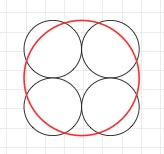In preparation for plumbing the house, the plumbers measured the water pressure at the street – 60 PSI. While 60 PSI is perfectly normal for inside house water, typical street water pressure ranges from 85 to 120 PSI. The difference is that higher pressure can provide more water.
To simplify, the relationship between pressure and flow is something like this:
Pressure = Constant * Flow2
In other words, as you increase pressure, flow increases by the square root of pressure. So, a 120 PSI water main would be able to provide about 1.5 times the flow of a 60 PSI water main.
However, there is a caveat; whenever you increase the flow rate, you increase the friction between the water and the pipe, which drops the pressure. So, at the end of all the plumbing, we might very well end up again with 60 PSI.
In our case, instead of being stuck with a standard 3/4″ water pipe from the main at 60 PSI, they gave us a 1 1/2 inch pipe. While this may sounds like it could provide double the water (which itself would be an improvement over the flow we might get with a higher street pressure), it actually increases the flow by almost a rate of 4 times. Consider the formula for calculating area from a radius
A = Πr2
Area increases by the square of the radius. You can see this visually like this:

By having a 1 1/2 inch pipe at 60 PSI, we can pretty much always get the water flow we need wherever we need it, a much better setup than the standard size line at a higher pressure.